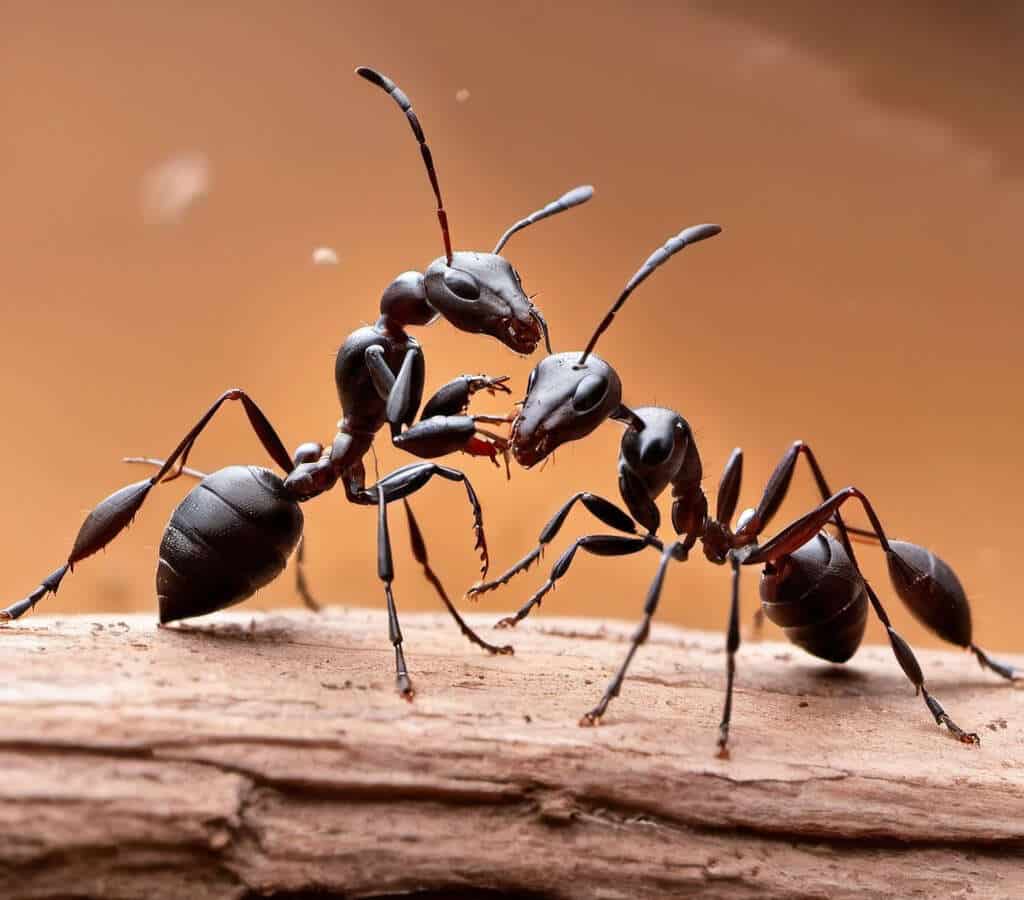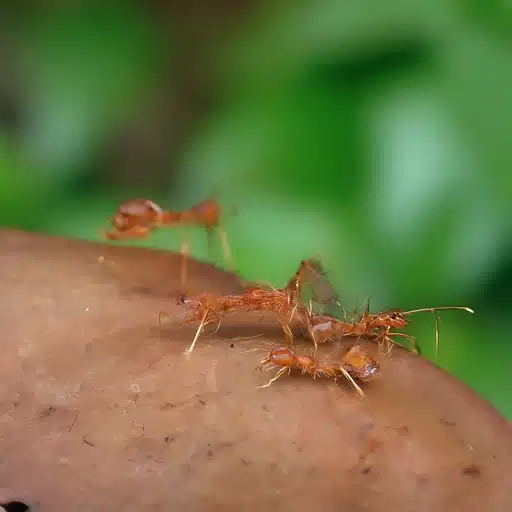Many home owners fear the bite of a termite. These insects will eat away wood until the structural integrity of your home is compromised. But what about ants? The carpenter ant is equally dangerous. It, too chews on wood. They will burrow into wood and create entire colonies in your home. But do carpenter ants bite? Carpenter ants do bite and inject formic acid into the wound causing pain. But they seldom bite humans unless provoked.
Carpenter ants are small in stature. This means that something as large as a human is difficult to grasp with small mandibles. But if you handle a carpenter ant, they will defend themselves. They are not outwardly aggressive in nature to humans. But these ants will burrow into wood to make their nests. They don’t eat wood, just make colonies in it. They are omnivores eating both plant and animal materials, including insects (living or dead), plant juices, fresh fruits, honey, jelly, sugar, syrup, meats, grease, fat, etc.
IDENTIFYING
Carpenter ants vary greatly in color. They can be black, red, brown, tan, yellow, or some combination thereof. Their color depends upon the species. They come in three sizes known as majors, medias and minors. The majors, protectors of the colony, are around 1/2” long. The minors, or general workers can be as small as 1/4”. These ants do not create mounds, but burrow into wood. Contact an Oklahoma pest control company for help.
If you get a close up look at a carpenter ant, you will see a curved, or hunchback shape to the body or thorax. They have one node, or small section between the thorax and abdomen which often has a tooth. The thorax is the middle part with the legs, and the abdomen is the rear section of the insect. As with all ants, there is a waist, or narrow section between each of the three body sections. The node will often have a tooth on it. Lastly, there are hairs protruding near the anal opening.
LIFECYCLE
The lifecycle of carpenter ants starts in late spring. Winged alates, or reproductive ants, will swarm with carpenter ants of other colonies, in search of a mate. Once a male and female find one another, they will mate. The male then dies, and the female will find a suitable piece of wood, and bore the beginning of a nest. She will seal herself in the chamber that she has made in the wood.
Once here, the female begins to lay eggs. She will feed and rear the first brood, feeding them with her salivary glands, until they are big enough to forage for food. Once this happens, the workers will take over the duties of foraging for food, building the nest, and protecting the colony. It will take between three and six years for the colony to develop into a color large enough to produce alates of its own. If you think you are having issues with carpenter ants, call a local Oklahoma exterminator.
A MATURE COLONY
The queen will lay her eggs only two times a year. The brood from early spring will produce workers and reproductives. The reproductives will swarm the following year. The second brood will be laid in June or July and only contain workers. This bimodal egg production is unique to carpenter ants. Because of it, mature colonies number populations between 2,000 and 4,000 individuals. For a social insect, this is a small number.
In order to diversify, carpenter ants will often have multiple nests for the same colony. The parent nest will house the queen, eggs and small larvae. Once the larvae gets larger, it will be moved to a satellite colony, where it will further develop and pupate. The main nest is often found in damp wood associated with water leaks, around plumbing or in roofs. The satellite colonies will be in dryer, warmer wood, more suitable for pupating larvae. There can be many satellite colonies.
ARE ANT BITES DANGEROUS?
As carpenter ants are omnivores, they will often hunt for food as much as they forage for it. If they find suitable prey, they will attack it, injecting formic acid with each bite. This will kill the prey, and then they will bring it back to the colony to feed upon. They will also use their bite to protect their colony. While it is difficult to get them to bite a human, it can happen.
Carpenter ant bites do not contain a venom. The acid in their bite is more of an irritant. They also do not carry any diseases that have been transmitted to humans that we know of. Because of these things, it is safe to conclude that ant bites are not dangerous. They do hurt, though. You will feel a pinch and a burning sensation if bitten. The small pea sized red blemish will go away in as long as a week. If the side effects last longer than that or are more sever, contact your medical professional.
THE DIFFERENCE BETWEEN ANT AND TERMITE DAMAGE
Carpenter ants burrow into wood to make a nest. Termites actually consume wood. If you see damage in your home that looks insect related, then it is important to know the difference. Ants are very meticulous about the galleys, or tunnels, that they make through the wood. These galleys will be clean with an almost sanded look. They do not have any dirt or mud in the galleys.
Termites, on the other hand, are subterranean. They need humid air to survive. To forage above ground, they will build mud tunnels to carry the humid underground air above ground where they will feed. This means that the galleys of termites are underneath a mud tunnel. It is also common to see dirt and mud inside the galleys. Both carpenter ants and termites eject frass, or waste from holes known as frass holes. Termite frass is a pellet in shape, while the carpenter ants eject a pencil shaving like frass.
ELIMINATING CARPENTER ANTS
If you are seeing any of these signs of carpenter ants, it may be time to call a Tulsa exterminator. TermMax Pest Control is a family owned Tulsa pest control company that is here to help you. We provide free estimates because we are here to help!



